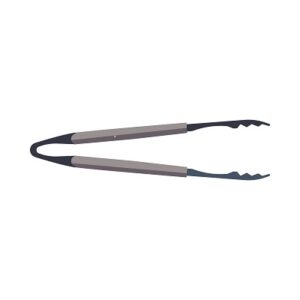Introduction :
The Hemodialysis Blood Tubing Sets Market refers to the sector focused on the production, distribution, and consumption of blood tubing sets used in hemodialysis treatments. These tubing sets are critical components in dialysis machines, responsible for the safe and efficient transfer of blood between the patient and the dialysis machine during the procedure.
The Hemodialysis Blood Tubing Sets Market encompasses a range of products essential for the hemodialysis process, including arterial and venous blood lines that facilitate the flow of blood during treatment. These tubing sets are designed to be sterile and biocompatible to prevent complications such as infections or blood clots. The market is driven by the increasing prevalence of chronic kidney disease (CKD) and end-stage renal disease (ESRD), which requires regular dialysis treatments.
Technological advancements and innovations in materials and design are continuously improving the safety and efficiency of these tubing sets. Additionally, the market is influenced by factors such as healthcare infrastructure development, rising awareness of kidney-related ailments, and the growing geriatric population. Key players in the market are focusing on expanding their product portfolios and enhancing the quality of their offerings to meet the evolving needs of healthcare providers and patients.
Get a Sample Copy of the Report to Know More: https://medicalmarketreport.com/report/global-hemodialysis-blood-tubing-sets-market/#requestForSample
Key Takeaways:
Growing Demand Due to Chronic Kidney Disease:
The need for hemodialysis blood tubing sets is rising because of the increasing prevalence of chronic kidney disease (CKD) and end-stage renal disease (ESRD). As more people require regular dialysis treatments, the demand for these critical components continues to grow.
Technological Advancements:
Innovations in technology are enhancing the safety and effectiveness of hemodialysis blood tubing sets. Modern tubing sets are designed with advanced materials to minimize risks such as infections and blood clots, improving overall patient outcomes.
Focus on Quality and Safety:
Manufacturers are placing a strong emphasis on the quality and safety of their products. This includes using biocompatible materials and ensuring sterility to prevent complications during the dialysis process.
Regional Market Differences:
The market for hemodialysis blood tubing sets varies significantly across different regions. Developed countries typically have higher demand due to advanced healthcare infrastructure and higher prevalence of CKD, while emerging markets are experiencing rapid growth as healthcare access improves.
Healthcare Infrastructure Development:
In regions where healthcare infrastructure is expanding, there is a noticeable increase in the adoption of hemodialysis treatments and associated products. This growth is often linked to investments in healthcare facilities and resources.
Competitive Landscape:
The market is competitive, with several key players striving to differentiate themselves through product innovation, cost-effectiveness, and improved patient safety. Companies are continuously working on new designs and features to stay ahead in the market.
Regulatory Requirements:
Compliance with stringent regulatory standards is crucial for manufacturers. Ensuring that products meet international safety and quality standards helps in gaining regulatory approvals and building trust with healthcare providers.
Segmentation Analysis:
Product Type:
Includes arterial blood lines, venous blood lines, and catheter blood lines. Each type is designed for specific functions during the hemodialysis process, affecting their demand and usage.
Material:
Segmented into PVC, polyurethane, and silicone-based tubing. Material choice impacts biocompatibility, flexibility, and overall performance of the tubing sets.
End User:
Comprises hospitals, dialysis centers, and home care settings. Demand varies based on the healthcare setting’s capacity to provide in-clinic or at-home dialysis treatments.
Geography:
Covers regions like North America, Europe, Asia-Pacific, Latin America, and the Middle East & Africa. Regional differences reflect varying healthcare infrastructure, prevalence of kidney diseases, and market growth rates.
Distribution Channel:
Includes direct sales by manufacturers, online platforms, and third-party distributors. Each channel influences product accessibility and market penetration.
Application:
Focuses on acute and chronic dialysis treatments. Acute applications are typically in hospitals, while chronic applications are more common in outpatient and home care settings.
Patient Demographics:
Segmented by age groups such as pediatric, adult, and geriatric. The prevalence of kidney disease and treatment preferences can differ significantly across these groups.
Drivers:
- Rising Prevalence of Kidney Diseases: The increasing incidence of chronic kidney disease (CKD) and end-stage renal disease (ESRD) is a significant driver for the hemodialysis blood tubing sets market. As these conditions become more common, the demand for dialysis treatments, and consequently for blood tubing sets, grows. The global rise in kidney-related health issues due to lifestyle changes, diabetes, and hypertension fuels this demand.
- Technological Advancements: Innovations in blood tubing set design and materials have improved the efficiency and safety of hemodialysis treatments. Advanced materials such as biocompatible polymers and improved sterilization techniques enhance the safety and functionality of tubing sets, making them more attractive to healthcare providers.
- Expanding Healthcare Infrastructure: In emerging markets, the expansion of healthcare infrastructure, including the establishment of new dialysis centers and hospitals, is boosting the demand for hemodialysis equipment. Investments in healthcare facilities in developing regions contribute to market growth by increasing accessibility to dialysis treatments.
Trends:
- Patient-Centric Design Innovations: There is a growing trend toward designing blood tubing sets that improve patient comfort and ease of use. Innovations such as more flexible tubing, improved connectors, and user-friendly features are becoming prevalent. These designs aim to enhance the patient experience during dialysis and reduce complications.
- Integration with Digital Health Solutions: The integration of hemodialysis blood tubing sets with digital health technologies is a notable trend. Smart sensors and monitoring systems that track blood flow and pressure are being incorporated into tubing sets, providing real-time data to healthcare providers and improving treatment outcomes.
- Shift Towards Home Dialysis: The increasing adoption of home dialysis is influencing the market. As more patients opt for at-home treatments, there is a growing demand for blood tubing sets that are compatible with home dialysis machines, leading to innovations tailored for home use.
Restraints:
- High Costs: The high cost of advanced hemodialysis blood tubing sets can be a barrier, especially in developing regions with limited healthcare budgets. Expensive products may limit access to necessary treatments and slow market growth in cost-sensitive areas.
- Regulatory Challenges: Stringent regulatory requirements for medical devices can pose challenges for manufacturers. Compliance with various international safety and quality standards is essential but can be time-consuming and costly, impacting market entry and product development.
- Risk of Infections: Despite advancements, there is still a risk of infections and complications associated with the use of blood tubing sets. Concerns over infection rates and the need for rigorous sterilization processes can limit market acceptance and usage.
Opportunities:
- Emerging Markets: There are significant opportunities in emerging markets where healthcare infrastructure is improving and the prevalence of kidney diseases is rising. Expansion into these regions offers growth potential as demand for hemodialysis treatments increases.
- Innovation in Materials: Opportunities exist for developing new materials that enhance the performance and safety of blood tubing sets. Research into alternative materials and improved designs can lead to products with better biocompatibility and durability.
- Partnerships and Collaborations: Collaborations between manufacturers, healthcare providers, and research institutions can drive innovation and market growth. Strategic partnerships can lead to the development of advanced products and expansion into new markets.
Regional Analysis:
- North America:
Dominates the market due to advanced healthcare infrastructure, high prevalence of chronic kidney disease, and significant healthcare spending. The U.S. and Canada lead in technological innovation and high-quality standards for medical devices.
- Europe:
Exhibits steady growth with strong healthcare systems and increasing investments in renal care. Countries like Germany, the UK, and France are key markets, driven by high demand for advanced dialysis equipment and supportive healthcare policies.
- Asia-Pacific:
Rapidly expanding due to improving healthcare infrastructure and rising CKD rates. Nations such as China, India, and Japan are experiencing significant market growth, driven by increasing healthcare access and investments in dialysis facilities.
- Latin America:
Shows moderate growth with rising healthcare investments and growing awareness of kidney diseases. Brazil and Mexico are major markets, with increasing demand for affordable and effective dialysis solutions.
- Middle East & Africa:
Emerging market with growth potential driven by improving healthcare infrastructure and rising CKD prevalence. Countries like South Africa and Saudi Arabia are investing in dialysis centers, leading to increased demand for blood tubing sets.
Key Players Analysis:
Home Instead Inc. primarily focuses on home care services, but its role in the hemodialysis blood tubing sets market is limited. They are not a direct player in the manufacturing of these sets but could influence the market indirectly through home-based care services and patient education.Amedisys Inc. is a key player in the home health care sector. They may impact the market by advocating for and utilizing hemodialysis blood tubing sets in their home dialysis programs, driving demand for high-quality and reliable products.Kindred Healthcare LLC offers various healthcare services, including home health and hospice care. Their involvement in hemodialysis may influence the market by creating demand for specific types of blood tubing sets tailored to their comprehensive care models.Seymour Health primarily provides healthcare services, including dialysis care. They are likely to influence the market through their purchasing decisions and preferences for high-quality, innovative blood tubing sets.Senior Care Centers of America Inc. operates long-term care facilities and may impact the market by integrating hemodialysis treatments into their services. Their demand for reliable and effective blood tubing sets could shape market trends.
- Home Instead Inc.
- Amedisys Inc.
- Kindred Healthcare LLC
- Seymour Health
- SENIOR CARE CENTERS OF AMERICA INC
- Other Key Players
If You Have Any Questions About This Report, Please Reach Out to Us https://medicalmarketreport.com/report/global-hemodialysis-blood-tubing-sets-market/#inquiry
Conclusion:
The Hemodialysis Blood Tubing Sets Market is poised for significant growth driven by the rising prevalence of chronic kidney disease (CKD) and end-stage renal disease (ESRD). As more patients require dialysis treatments, the demand for high-quality, reliable blood tubing sets continues to increase. Technological advancements are enhancing the safety and effectiveness of these products, with innovations in materials and design improving patient outcomes and reducing complications.Regional variations play a crucial role in shaping the market dynamics. North America leads with its advanced healthcare infrastructure and high disease prevalence, while Europe also shows steady growth due to supportive healthcare systems.
contact us
Market.us (Powered By Prudour Pvt. Ltd.)
Address: 420 Lexington Avenue, Suite 300,
New York City, NY 10170, United States
Tel: +1 718 618 4351
Email:[email protected]



